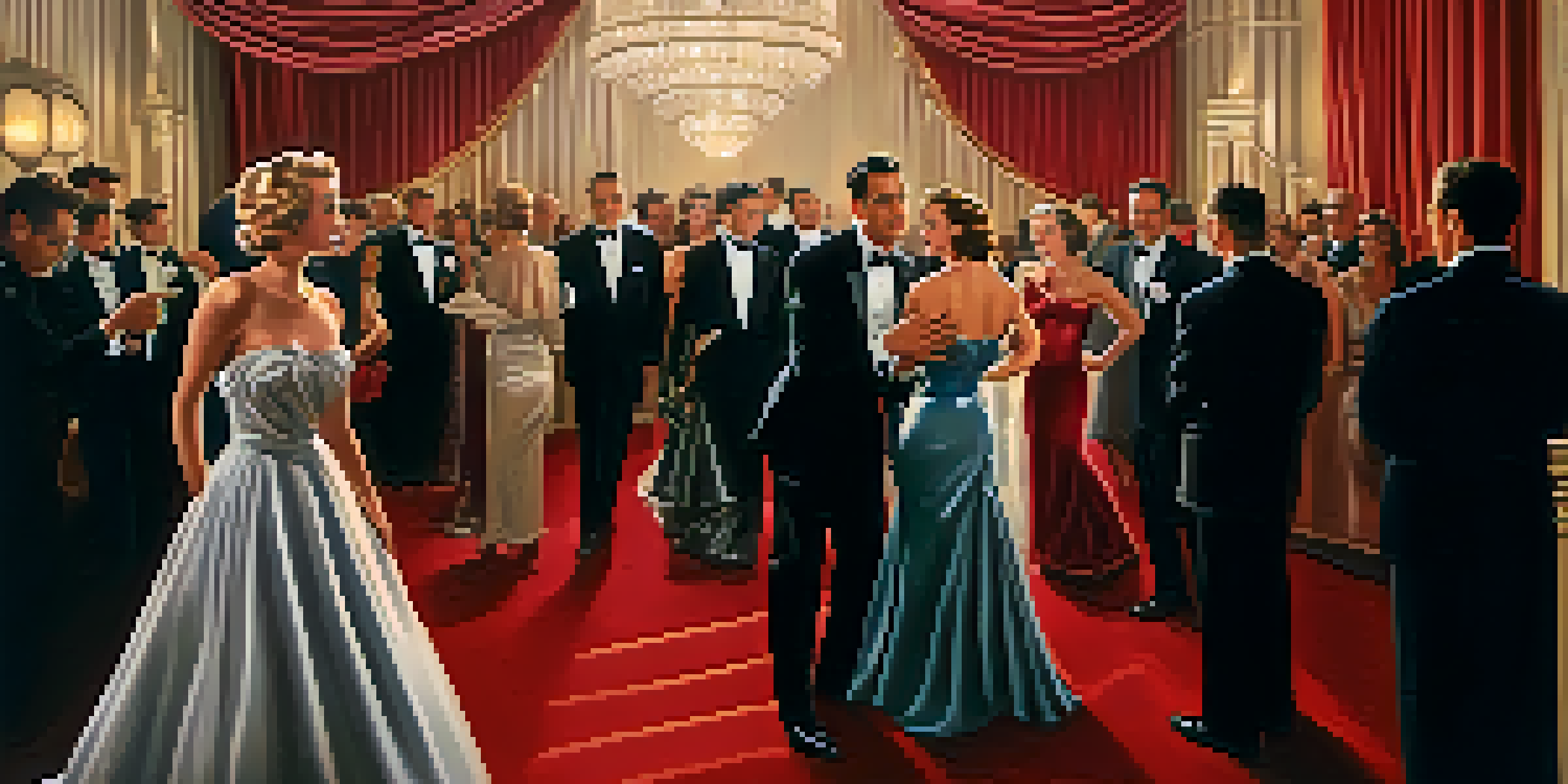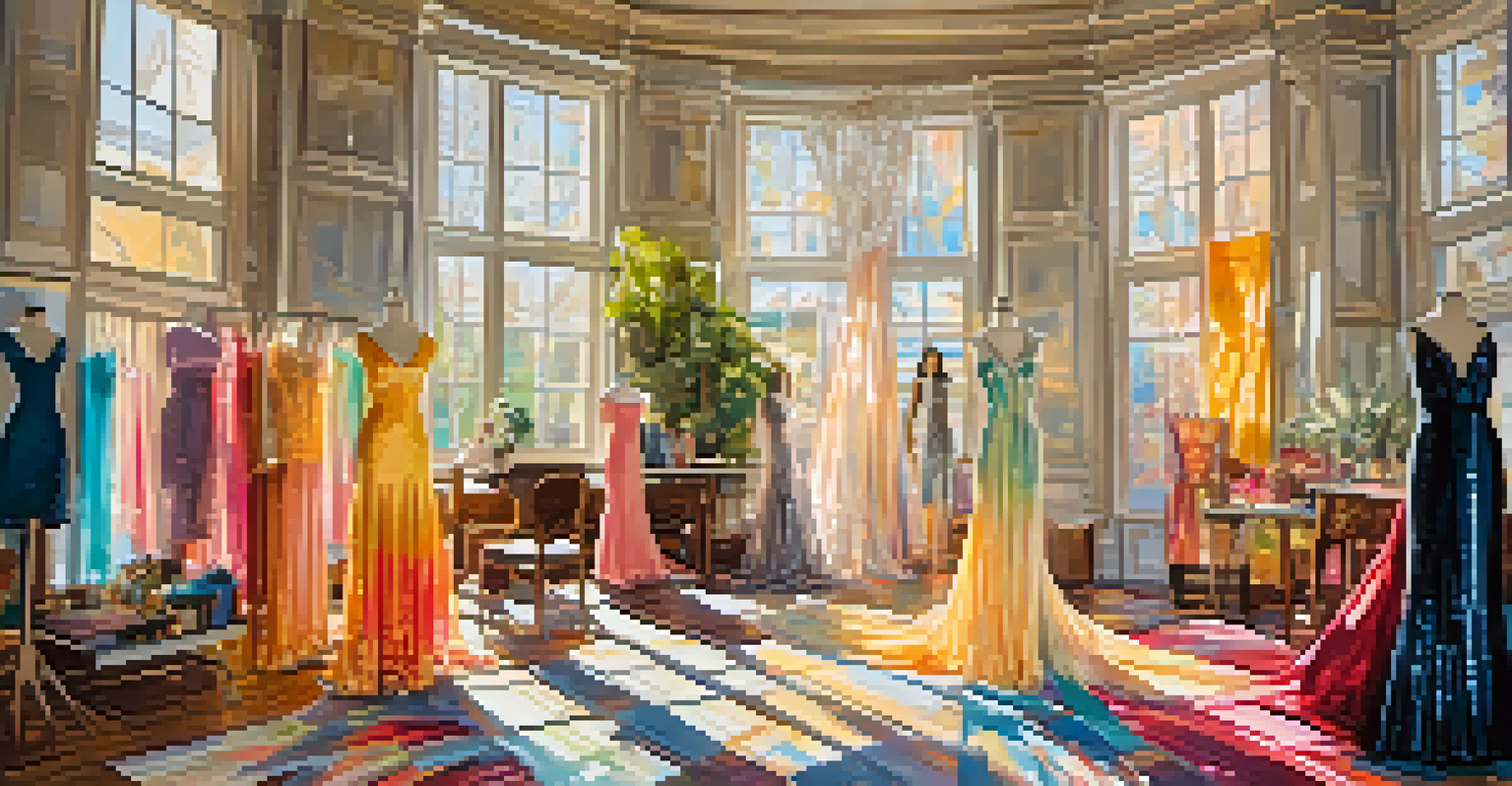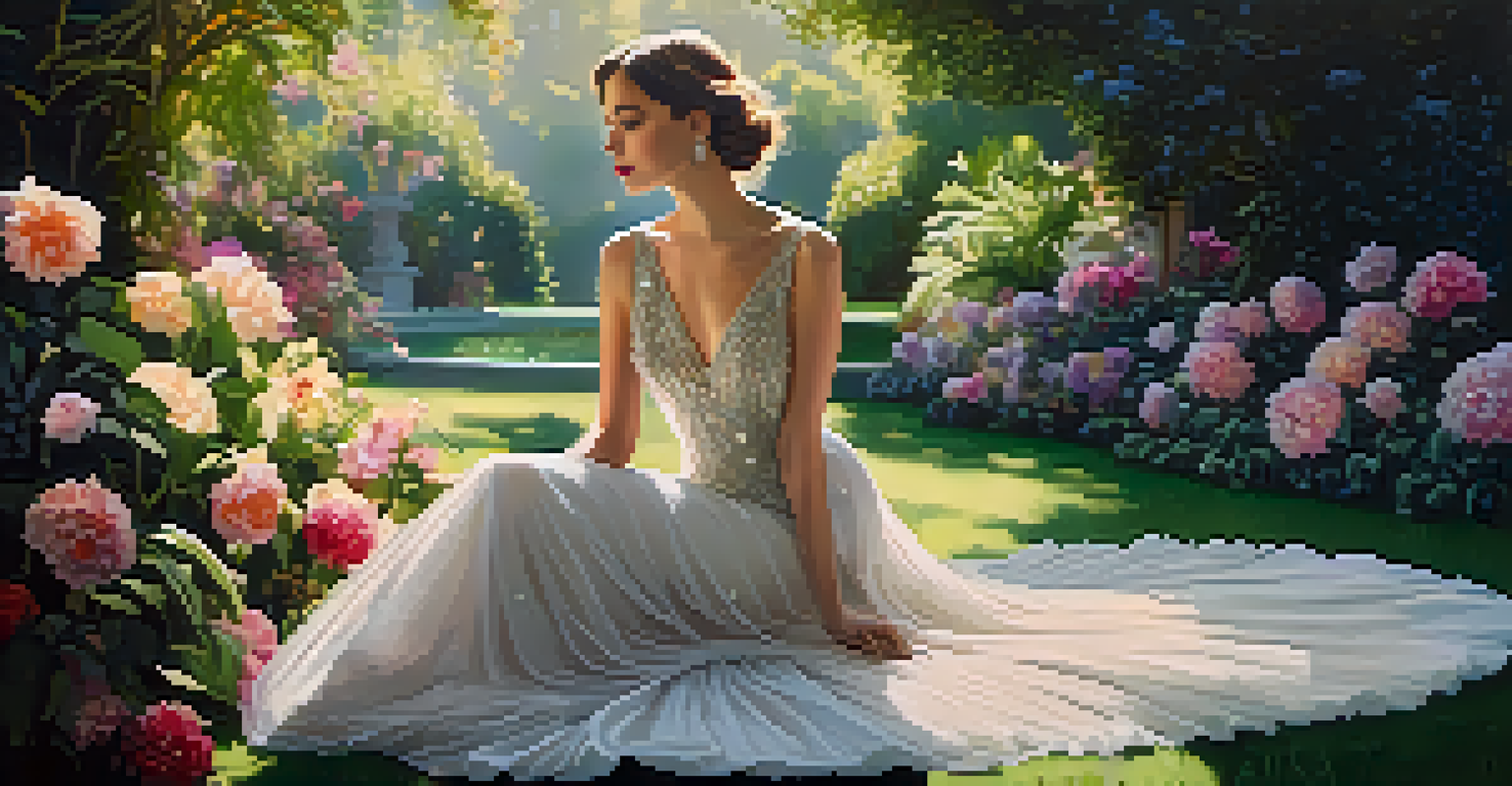Hollywood Glamour: The Birthplace of Iconic Fashion Styles

The Golden Age of Hollywood: A Fashion Revolution
The Golden Age of Hollywood, spanning the 1920s to the 1960s, marked a transformative era in fashion. Icons like Audrey Hepburn and Marilyn Monroe didn't just act; they set trends that would define a generation. With their unique styles and charisma, they became symbols of glamour and sophistication, influencing everyday fashion choices across the globe.
Fashion is the armor to survive the reality of everyday life.
Costume designers like Edith Head and Adrian played pivotal roles in shaping these iconic looks. Their creativity brought characters to life while simultaneously influencing real-world fashion. Films became a window into a world of elegance, and audiences eagerly emulated the styles they saw on screen.
This period also saw the emergence of haute couture in Hollywood. The blending of film and high fashion created a unique culture where glamour was not only a form of entertainment but also a lifestyle aspiration for many. The lasting impact of this era continues to resonate in today's fashion landscape.
Hollywood Icons and Their Signature Styles
Hollywood is synonymous with iconic figures whose styles have left an indelible mark. Think of Grace Kelly's timeless elegance or James Dean's rebellious edge; these personalities became fashion benchmarks. Their signature styles reflected their on-screen personas, capturing the imagination of fans and setting trends that echoed far beyond the silver screen.

For instance, Marilyn Monroe's white dress from 'The Seven Year Itch' is not just a costume; it's a cultural phenomenon. This simple yet striking outfit became a symbol of femininity and allure, showcasing how a single piece can transcend its original context to become a fashion staple. Many women still look to it for inspiration today.
Hollywood Fashion Transformed Styles
The Golden Age of Hollywood revolutionized fashion, with icons like Audrey Hepburn and Marilyn Monroe setting trends that influenced global style.
Moreover, these icons frequently collaborated with talented designers, further bridging the gap between Hollywood and high fashion. Their influence laid the groundwork for future collaborations, where celebrity endorsements would eventually become a driving force in fashion marketing.
The Influence of Hollywood on Global Fashion Trends
Hollywood's impact on fashion extends far beyond American borders. As films gained international acclaim, so did the styles showcased within them. This cross-cultural exchange enriched global fashion, as designers worldwide drew inspiration from Hollywood's glamour, making it a universal language of style.
Style is a way to say who you are without having to speak.
Take the influence of Bollywood, for example. As Indian cinema began to flourish, it adopted elements of Hollywood glamour, merging them with traditional attire. This blend created a new fashion narrative that resonates with audiences while honoring cultural roots, demonstrating the power of Hollywood to inspire creativity globally.
Moreover, fashion weeks around the world often draw inspiration from Hollywood's glitzy aesthetic. Designers pay homage to classic styles while infusing them with contemporary twists, showcasing how Hollywood's legacy continues to evolve and inspire future generations of fashion enthusiasts.
The Evolution of Red Carpet Fashion
The red carpet has become a fashion battleground, showcasing the latest trends and timeless classics. From the understated elegance of the 1950s to the bold statements of today, red carpet events have always been a platform for designers and celebrities to shine. This evolution reflects broader societal changes, as fashion becomes a means of self-expression and empowerment.
Stars like Lady Gaga and Rihanna have pushed boundaries, challenging traditional notions of beauty and glamour. Their daring choices have redefined what it means to be fashionable, inspiring a generation to embrace individuality. The red carpet is no longer just about looking good; it's about making a statement.
Red Carpet: A Statement of Identity
Today's red carpet events reflect broader societal changes, showcasing bold fashion choices that empower individuality and self-expression.
As fashion evolves, so does the audience's expectation for creativity and innovation. The red carpet continues to be a space where art meets fashion, reflecting the dynamic nature of style in a fast-paced world. It's a testament to how Hollywood remains at the forefront of shaping fashion narratives.
Hollywood Glamour and Sustainable Fashion
In recent years, Hollywood has begun to embrace sustainable fashion, recognizing its responsibility to the environment. With increasing awareness about climate change and ethical production, celebrities are now using their influence to advocate for eco-friendly practices. This shift signals a new era where glamour and sustainability can coexist.
Stars like Emma Watson and Leonardo DiCaprio have championed sustainable brands, demonstrating that style need not come at the expense of the planet. Their commitment to ethical fashion is inspiring designers to innovate, creating stunning pieces that are both chic and environmentally friendly. This movement reflects a growing consciousness among consumers who prioritize sustainability in their fashion choices.
Moreover, the rise of vintage and thrift shopping reflects a cultural shift within Hollywood. By opting for pre-loved garments, celebrities are not only showcasing unique styles but also promoting a more sustainable approach to fashion. This trend not only honors the past but also paves the way for a more responsible future in the fashion industry.
Fashion in Film: More Than Just Costumes
Fashion in film serves a greater purpose than merely dressing characters; it plays a crucial role in storytelling. Costume designers meticulously craft looks that reflect a character's personality, background, and evolution throughout the film. A well-chosen outfit can convey emotions and themes, enhancing the viewer's connection to the narrative.
For example, in 'The Great Gatsby,' the opulent costumes transport audiences to the Jazz Age, immersing them in the era's spirit. Each piece tells a story, from flapper dresses to tailored suits, capturing the essence of the characters and their desires. This intricate relationship between fashion and storytelling reinforces the idea that style is a vital component of cinematic art.
Sustainability in Hollywood Fashion
Recent years have seen Hollywood embrace sustainable fashion, with celebrities advocating for eco-friendly practices and vintage shopping.
As filmmakers continue to explore new narratives, the role of fashion will only grow in significance. The collaboration between filmmakers and designers offers endless possibilities, resulting in stunning visuals that resonate with audiences long after the credits roll. This synergy showcases how fashion can elevate storytelling in profound ways.
The Future of Hollywood Glamour and Fashion
As we look ahead, the future of Hollywood glamour and fashion appears promising yet challenging. With the rise of digital media and social platforms, trends can spread like wildfire, transforming the fashion landscape overnight. This rapid evolution demands that designers and celebrities remain adaptable and innovative.
Additionally, the increasing focus on inclusivity and diversity is reshaping the narrative of glamour. Fashion is becoming more representative, breaking stereotypes and embracing a broader spectrum of beauty. This shift reflects a cultural renaissance where everyone can find their place within the world of fashion, regardless of size, shape, or background.

Ultimately, the essence of Hollywood glamour will continue to evolve, embracing new ideas while honoring its rich history. As fashion trends come and go, the spirit of creativity and self-expression will remain at the forefront, ensuring that Hollywood remains a beacon of inspiration for fashion lovers worldwide.